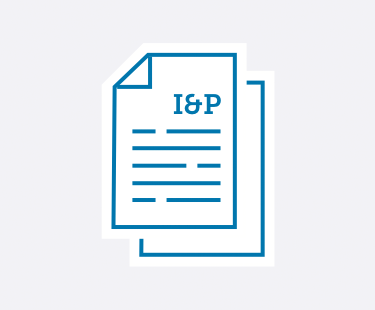

Learn practical strategies to handle emerging trends and leadership challenges in private schools.
No matter if you’re a School Head, Admission Director, Development Director, Board member, or any other private school administrator—Ideas & Perspectives®, ISM’s premier private school publication, has strategic solutions for the pervasive problems you face.
- Tuition not keeping pace with your expenses? In I&P, explore how to use strategic financial planning to create your budget and appropriately adjust your tuition.
- Enrollment dropping off? Discover how to implement the right admission and enrollment management strategies that engage your community—and fill your classrooms.
- Trouble retaining teachers? Learn how you can best support your teachers using ISM’s Comprehensive Faculty Development framework. Your faculty members will become more enthusiastic about their roles—which ultimately improves student outcomes.
- Fundraising campaigns not as successful as you’d hoped? Implement ISM’s practical advice and guidance to build a thriving annual fund, construct an effective capital campaign, and secure major donors—no matter your community size or location.
- Not sure how to provide professional development—for you and your staff? Learn ways to develop and fund a successful professional development strategy. You can improve teacher-centered satisfaction and growth, which in turn strengthens student-centered learning.
- Problematic schedule? You can master the challenges of scheduling with the help of ISM’s practical advice, based on our experience with hundreds of schools and our time-tested theories.
- And so much more.
I&P has shared targeted research, up-to-date insight, and sound theory with school leaders since 1975. More than 8,500 private school decision-makers find the answers to their schools’ administrative and governance matters in our advisory letter. We give you the strategic answers you need.
As an ISM Silver or Gold member, you not only receive issues online and in print 10 times a year, but you have access to 900+ articles in our web archive. Need help? It’s at your fingertips! Learn more and sign up for ISM's membership here.
Search
See the articles from our latest issue of Ideas & Perspectives.
Risk Management Assessment: Reduce Your School’s Exposure
Volume 41 No. 4 // March 28, 2016
Operating a school is a risky business, and that risk comes in many forms—an unexpected illness breaks out in the third-grade classroom, a parent claims an incident of misconduct or bullying, the brakes on a school bus aren’t replaced on schedule, or the Business Manager overlooks enrolling two new faculty members in the health plan. Even an insignificant incident—a tree limb that falls on a neighbor’s car—can result in an insurance claim and possibly a lawsuit.
1. Already a member? Click here to login.
2. Not a member? Click here to become a member.
3. Not sure? We'll help you figure it out.
Professional Ethics in Advising
Volume 41 No. 4 // March 28, 2016
The Professional Characteristic expressed above derives from ISMs research on school culture, and student performance and satisfaction. It is a distinguishing component of ISM's approach to faculty growth and renewal. A core principle behind ISM's guidance to schools, in general, is that their reason-for-being is to benefit students. As one dimension of this student-centered focus, we have endorsed a mission basis for middle and upper school advisory programs and emphasized that the advisor is a professional.
1. Already a member? Click here to login.
2. Not a member? Click here to become a member.
3. Not sure? We'll help you figure it out.
Prospective Trustee Interviews
Volume 41 No. 3 // March 7, 2016
After you, as Chair of the Committee on Trustees (COT), have completed a satisfactory phone call with an individual identified as a promising member of your Board, then conduct a face-to-face interview. This interview will be the second of three steps before submitting the individual’s name for full-Board consideration and vote. Thus, the three steps are: (1) COT Chair phone call; (2) COT Chair in-person interview; and (3) COT full-committee interview.
1. Already a member? Click here to login.
2. Not a member? Click here to become a member.
3. Not sure? We'll help you figure it out.
Self-Assessing Your Department/Team
Volume 41 No. 3 // March 7, 2016
When Department Chairs/Team Leaders meet with their Division Head, what is the basis for any conversation? Many schools that ISM visits lack any idea of what the Department Chair or Team Leader is supposed to do (outside some basic managerial items). Division Heads rarely give the Chair/Leader the authority to implement the tasks assigned. The following assessment is designed to spur the creation of the Department Chairs’ own self-assessments and should be considered a guideline. The five major principles of Department Chair/team leadership include:
1. Already a member? Click here to login.
2. Not a member? Click here to become a member.
3. Not sure? We'll help you figure it out.
10 Attributes of an ISM Model Advisory Program
Volume 41 No. 3 // March 7, 2016
Of the several formal programs that engage and serve students in private-independent schools’ middle and upper divisions (e.g., community service learning, athletic teams, clubs, even academic classes), none may exhibit more variability among schools in structure, content, faculty commitment, and avowed institutional importance than the advisory program. Simply put, each advisory program is unique in when, how, how often, and even why advisors encounter and serve advisees and their families; in how much time is given to planning and professional development; and in how much advisory participants value the program itself. While ISM does not provide guidance on some distinguishing programmatic variables (e.g., content of advisory group curricula), we have espoused some core principles and practices. In this article, we express them as a list of attributes to which schools should aspire.
1. Already a member? Click here to login.
2. Not a member? Click here to become a member.
3. Not sure? We'll help you figure it out.
Can You Ask About Learning Disabilities on the Admission Application Form?
Volume 41 No. 3 // March 7, 2016
Can you ask about a student’s learning disability on the enrollment form? The answer is, “It depends.” It’s essential to understand how you can—and cannot—phrase the question, and to balance the benefits and drawbacks
1. Already a member? Click here to login.
2. Not a member? Click here to become a member.
3. Not sure? We'll help you figure it out.
Enhance the Content of Your School Newsletter
Volume 41 No. 2 // February 8, 2016
Once upon a time, school updates and “newsletters” were little more than photocopied to-do lists for parents, reminding them of upcoming deadlines and maybe including the next week’s lunch menu. Since then, the school newsletter has evolved, becoming a powerful communication and relationship-cultivation instrument.
1. Already a member? Click here to login.
2. Not a member? Click here to become a member.
3. Not sure? We'll help you figure it out.
Admission Reporting to the Board
Volume 41 No. 2 // February 8, 2016
In many schools, the Admission Director makes a regular Board report, either in person or through a written report or presentation from the Advancement Director. Therefore, we would like to explore pertinent issues to make certain that operational data does not interfere with the strategic/operations separation of powers. The Board President and School Head must ensure the Board receives the information it needs and that such information does not offend the strategic/operations separation of powers. This is particularly important as your Board might well be anxious given the economic turmoil since 2009.
1. Already a member? Click here to login.
2. Not a member? Click here to become a member.
3. Not sure? We'll help you figure it out.
The Board Profile as a Strategic Document
Volume 41 No. 2 // February 8, 2016
Of the many functions that ISM has suggested for the Committee on Trustees (COT), none is more fundamental to long-term school success than the “profiling” process. The following anti-example, published in I&P two decades ago, remains too representative even today. “Well,” the Board President said, “we now have two vacancies on the Board. Does anyone have names to suggest?” The room was silent. People looked at one another and then at the President. Finally someone said, “What about Harry Jones? He headed the Theatre Party last fall and did a great job.” Another brought up the name of the local Superintendent of Schools, soon to retire. Within five minutes, six names were being bandied about. Since two of them received more positive reactions than the rest—and because one member volunteered to call on those two people—an informal decision was made. The two would be approached about whether they would be willing to serve, if formally asked.
1. Already a member? Click here to login.
2. Not a member? Click here to become a member.
3. Not sure? We'll help you figure it out.
The Role of the Department Chair: A Middle Manager
Volume 41 No. 2 // February 8, 2016
Considering the Department Chair as a middle manager can be a difficult proposition. In many schools, the Department Chair still teaches the same number of classes as everyone else and has little real power. Or the Department Chair is, so to speak, the “union leader” of a power group that advocates for its own position within a power structure. The prerequisite for a change in the role to one of middle manager requires the entire faculty culture to be growth-focused. In such a culture and with strong Division Head leadership, the Department Chair can exercise proactive leadership that supports the school’s strategic vision largely by grounding it in a realistic application within the classroom.
1. Already a member? Click here to login.
2. Not a member? Click here to become a member.
3. Not sure? We'll help you figure it out.


